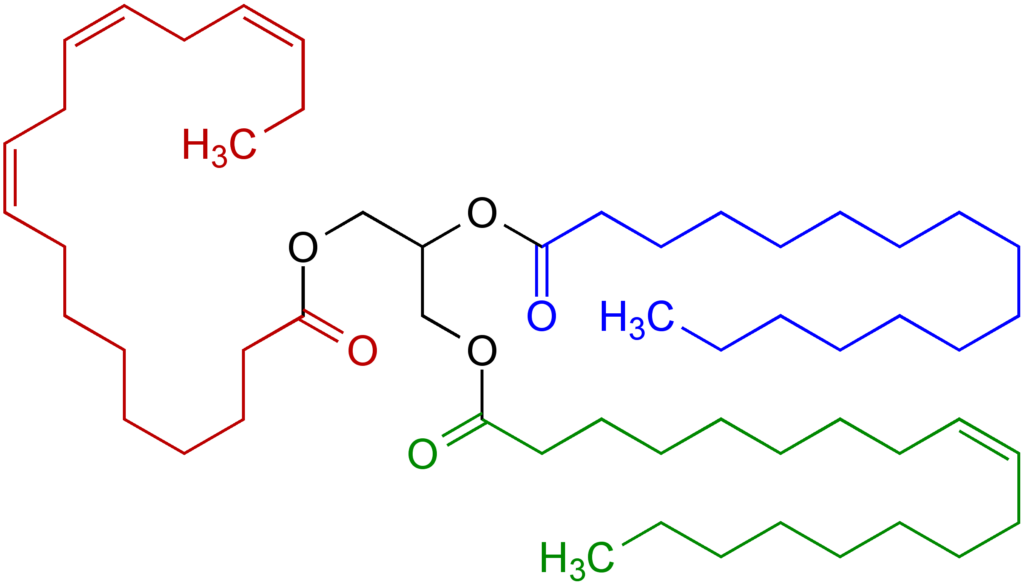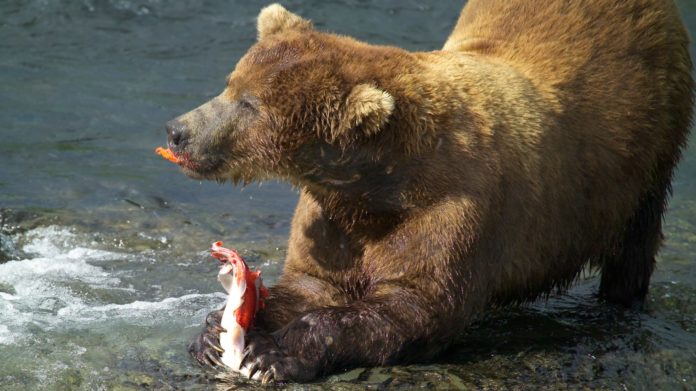Grizzly bears can survive through the winter on a diet rich in saturated fats without developing adverse health consequences, according to a new study.
In the colder months, bears don’t actually hibernate, contrary to popular belief. They enter into a state known as torpor, which is akin to hibernation but not the same. Though they may reduce their metabolic rate and sleep up to 100 days at a time during torpor, they rise intermittently to stock up on food and even give birth if necessary.
Every fall, bears stock up on fuel by consuming up to 20,000 kcal per day (a process known as hyperphagia). Bears love fats: previous work has shown that even when they have an abundant choice of food, they’ll still prioritize food that’s loaded with fats.
When it’s time for their elongated winter snoozes, the average grizzly’s body fat levels are between 30 and 40% of their total body weight. If a human shared this body fat level, that person would be considered obese.
One man’s trash might be a bear’s treasure
Unsurprisingly, habitats and food sources for this apex predator have fragmented considerably across the continent because of human disturbance in the last century. In national parks and residential areas that overlap with habitats, grizzlies often rummage through dumpsters and trash cans looking for a meal.
To an unwitting bear, this delicious garbage may be impacting their health because of a high amount of saturated fats, which are linked to myriad health issues. Bears may have evolved to tolerate obesity as part of torpor, but the fats in their diet would typically feature more unsaturated than saturated fats.
The difference between unsaturated and saturated fats (often referred to as “good” and “bad” fats) relates to their chemical composition. The number of double bonds between individual carbon atoms determines the category (polyunsaturated have multiple double bonds and monounsaturated have only one).

Nuts, fish, olive oil, and seeds are good sources of unsaturated fats, essential for a healthy diet. Processed foods and sugary snacks are riddled with saturated fats, and they contribute to coronary heart disease, type II diabetes and other medical conditions.
A general rule of thumb is that saturated fats solidify at room temperature (yesterday’s congealed bacon grease!), whereas the presence of double bonds in unsaturated fats maintains a liquid state.
Momma bears and their metabolic superpowers
Over two years, the team of Canadian and US researchers observed and measured four female grizzlies in captivity under controlled diets. The bears were split into groups of two, with one fed primarily food rich in saturated fatty acid (SFA) and the other with polyunsaturated fatty acid (PUFA).
The PUFA diet consisted of salmon and oats mixed with complex carbohydrates, while the SFA diet contained commercial chow, beef, cheddar cheese and high-fructose corn syrup.
Researchers plumped up the furry ones as winter approached and measured their stats in the spring when they emerged for good. Insulin levels, inflammation markers, blood pressure, and cardiac functions were recorded and compared.
Although they observed some negative effects such as mild inflammation, the bears’ systems were remarkably resistant to the SFA diet. The authors note that because the study’s bears were only full of SFA foods for part of the year (the torpor period lasts 5 – 7 months), it’s possible that the saturated fats didn’t have enough time to maximize their impact.
However, for wild bears who regularly consume human waste or those kept in captivity, their health may still be at risk. Further research is necessary to know for sure.
Regardless, the authors believe that such an impressive level of metabolic resistance suggests that grizzly obesity may be considered a normal, healthy part of their annual cycle.








































